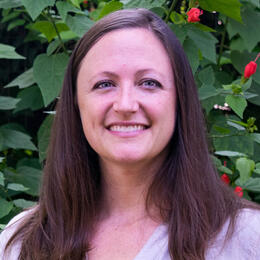Deep in the Francis Beidler Forest, the remnants of an old bird-banding station stood unused and forgotten. Ten pairs of aluminum poles, now leaning slightly among the sweet bay and dwarf palmetto, once held the fine “mist nets” that scientists use to trap unsuspecting birds in the wild.
In 2009, this research site was used to study Prothonotary Warblers and capture a sampling of other birds that frequent the forested uplands above our swamp. Now it’s come to life again the form of a MAPS station: part of a nationwide network that monitors the breeding bird populations of North America.
Great Catch
Not long after we strung our new nets, my colleague Matt Johnson caught something special. I couldn’t see over his shoulder, so Matt had me guessing species while he extracted the little creature from the net and placed it in a soft cotton bag.
When we reached the table where we’d laid out our equipment, Matt opened the bag to reveal a small, brown, unassuming bird whose plumage looked almost silvery green in the forest light. A Swainson’s Warbler! Though plain, this bird is elusive and highly sought after by birders and researchers alike.
Matt and I both know that Swainson’s Warblers are one of the most secretive and least-observed North American birds, so we were already pretty excited. Then we spotted the aluminum band around its leg — this bird was already banded!
Old Timer
We could tell that it was a male more than two years old. There was no left-over juvenile plumage, and the bones in its skull had firmly knit together. The band was the key to learning more. It was dull and showed its age, but its nine-digit unique code was still legible.
Using that code, MAPS scientists soon figured out that our Swainson’s Warbler was banded at this very same station in 2009! This bird had returned each year from its wintering grounds in the Caribbean, flying back and forth hundreds of miles to the exact same spot in the Francis Beidler Forest.
That’s about as much excitement as we’re used to in a day, but there was more to come. Based on information recorded during the first banding, we could tell that this bird hatched in 2007. That made it nine years and eleven months old, exactly the same age as the oldest Swainson’s Warbler anyone’s ever caught.
Sweet to Hear
If this bird flies into our nets again later this summer, he’ll be the oldest Swainson’s Warbler on record — anywhere, ever.
Until then, we’ll listen to his signature song floating above our resurrected banding station. Birders remember that slurred whistle as “so, so, so, so, sweet-to-hear.” You bet!!!





